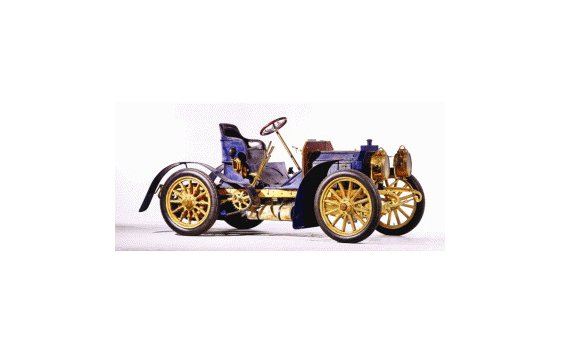The Only Way Is The Winning Way
 The German Mercedes-Benz has racing in its veins; a wonderful new book by auto journalist and car historian Adil Jal Darukhanawala brings this facet out, writes Kushan Mitra
The German Mercedes-Benz has racing in its veins; a wonderful new book by auto journalist and car historian Adil Jal Darukhanawala brings this facet out, writes Kushan Mitra
All of us who have been automotive writers over the past decade and a half have had the pleasure of knowing Adil Jal Darukhanawala. This doyen of Pune’s Parsi community has been a fixture in many of our lives and I can genuinely say that I have had enjoyable drives with Adil all over this country and abroad. His wealth of automotive knowledge — not just the deep technical knowledge he possesses, but also the mnemonic details he has about historical races from the very early days of car racing — is incredible.
This attention to detail that Adil has comes to the fore in the early chapters of his coffee-table book, Mercedes-Benz: Winning. For any fan of car racing, to call this a book would be grossly unfair, because this is a literal treasure trove of facts. Despite living in the age of Google and Wikipedia, when we can ask a hand-held contraption to pull up details that are stored on servers, there is a clear need for something like this.
The early chapters detail how the future Mercedes-Benz was forged in the crucible of automotive racing. The company we know did not exist; Carl Benz had invented the automobile yet it were Daimler engines that powered the early days of automotive racing in the 1890s. Gottlieb Daimler and Carl Benz, the two brilliant engineers who lent their names to the company today, never met each other despite living in the same region of Southern Germany.
One could argue that the archival details of many of these early races are available on the internet, which they well might be. Yet, it is impossible to imagine that such fine archival pictures are available. And there are details to some incidents that are really illuminating, like how the first crash of a Daimler car at a race was to give birth to the name Mercedes. Some of us already knew of the tragic life of Mercedes Jellinek, the daughter of Austro-Hungarian nobleman Emil Jellinek, whose determination kept Daimler racing, but Adil produces a wealth of new details. One also learns of the Daimler-Mercedes of 1901, dubbed the world’s first sports car.
As the chapters progress, one gets to learn how the early racing pioneers in Europe and America started out, how the sport of motor-racing itself developed and which innovations were made. The earliest cars, for example, used chain drives much like motorcycles. Some of the early races had massive circuits, often more than 50 km long, and a riding mechanic sat beside the drivers in order to be able to repair the cars which had huge engines over 20,000cc.
You learn how motor racing became a focus of nationalists in an extremely charged Europe, and Mercedes-Daimler’s win at the 1914 French Grand Prix was highly significant.
The inter-war period is also covered in great detail as manufacturers started manufacturing for a larger base of buyers, they continued to show off their wares. As Mercedes-Daimler and Benz unified their forces in a Germany that was still suffering the effects of defeat, they made their countrymen proud by winning races.
You learn of the ‘Silberfeile’ (Silver Arrows) that was created by Mercedes-Benz on their W25 racecar — German cars raced in white, but the W25 racecars subsidised by Adolf Hitler, who wanted the team to win international events, did away with the paint to lose weight. The pictures vividly show the intense racing rivalry between Mercedes-Benz and Auto Union (the future Audi).
Even the post-war period is covered in great detail. Despite suffering immensely from the war, Germany and Mercedes came back to racing by the early-1950s until the tragedy that struck at Le Mans in 1955, when the Mercedes 300SL driven by Frenchman Pierre Levegh lost control and careened into the crowds in what became the worst auto racing accident in history.
This incident led to Mercedes withdrawing from motorsport for four decades with occasional forays into rally-racing and through Swiss firm Sauber made a return to the World Endurance Championships and then to Formula 1.
First in 1993 but then the famous association with British firm Mclaren whose Finnish driver Mika Hakkinen won the F1 Drivers Championship in 1998 and 1999. Mercedes won further success with Lewis Hamilton in 2008 and with Jenson Button of the Brawn-Mercedes team in 2009. Mercedes bought out the Brawn team and made a triumphant return to being their own team with stunning wins in the 2014 and 2015 Formula 1 seasons with Hamilton adding two more titles. Much like their success a century ago, Mercedes-Benz’s current success, Adil argues, is predicated on their engineering excellence.
In a chat with Adil, we talk of the incident at the Austrian Grand Prix last Sunday when Nico Rosberg crashed into his Mercedes team-mate Hamilton. Shenanigans have always taken place in motor racing, Adil explains, even in the early days, the will to win supersedes everything else. Adil promises to detailing car and automotive history. This book while expensive is something that any fan of motor-racing should consider buying, just for the detail.
Published on DailyPioneer




